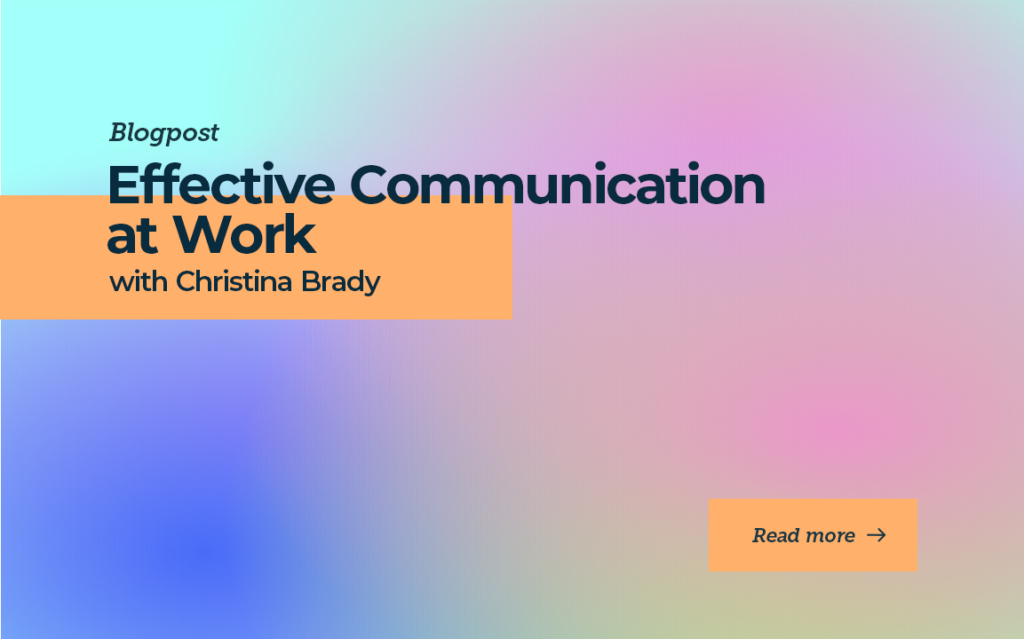Effective Communication at Work with Christina Brady

In the digital age, where remote work has become the norm, mastering the art of communication has never been more critical. The ease and convenience of emails, texts, and Slack messages come with challenges, from misunderstandings to missed cues.
Joining us on the Predictable Revenue Podcast, Christina Brady from Luster.ai shares her expertise on enhancing communication in virtual teams, discusses common pitfalls, and offers actionable solutions for a more connected workspace.
The Challenges of Digital Dialogue
The shift to remote work has drastically increased our reliance on written communication, yet the absence of non-verbal cues often leads to misinterpretation.
Christina shares how even punctuation, like a simple period, can be seen as harsh by some, while others view it as merely proper grammar. This subjective interpretation can turn humorous or sarcastic comments into sources of confusion, leading to unnecessary clarifications and, ultimately, time wasted.
Moreover, the switch to platforms like Zoom introduces another layer of complexity. While it aims to replicate face-to-face interactions, distractions are rampant, from notification pings to multiple open tabs, diminishing our ability to listen and engage genuinely.
The lack of physical presence also affects how we perceive each other’s tone and intention, with sarcastic remarks coming off colder and more serious than intended.
Embracing Adaptability and Empathy
Adopting strategies emphasizing clarity and empathy is crucial to bridging the digital communication gap. Christina suggests being mindful of how messages might be received and adapting our communication style to match the recipient’s.
This includes reserving text for straightforward exchanges and opting for video calls for more nuanced discussions, where visual cues can help convey the intended tone.
A significant part of enhancing virtual communication lies in feedback.
Christina emphasizes the importance of providing constructive criticism in a direct, personal manner rather than through text. This approach preserves the relationship and ensures the feedback is understood and received as intended.
By recognizing digital communication’s limitations and actively seeking to mitigate them, teams can foster a more cohesive and understanding work environment. It’s about making a concerted effort to communicate efficiently and effectively, ensuring that the message sent is the message received.
Navigating Nonverbal Nuances
Understanding and navigating the nuances of nonverbal cues becomes increasingly complex. Christina brings attention to the subtle yet significant challenges we face in digital and in-person interactions, particularly emphasizing the importance of recognizing diverse communication styles.
The DISC Methodology and Nonverbal Nuances
Brady illustrates how different communication styles, as outlined in the DISC methodology, can lead to misinterpretations of nonverbal cues.
For instance, a high ‘D’ (Dominance) individual might cross their arms when thinking, whereas a high ‘S’ (Steadiness) person does the same when feeling uncomfortable.
This distinction highlights the risk of miscommunication even in face-to-face interactions, underscoring the importance of being attuned to and respectful of varying communication preferences.
Encouraging Inclusivity in Team Dynamics
Brady further explores the dynamics of team meetings, where louder, more enthusiastic individuals often dominate the conversation. This overshadows quieter team members and inadvertently sets a hierarchy of engagement that might not reflect each team member’s true potential.
Leaders can foster a more inclusive environment that values and leverages the full spectrum of ideas and perspectives by actively seeking diverse input and allowing all voices to be heard.

Creating Safe Spaces for Varied Communication Styles
One critical solution Brady proposes is creating safe spaces for individuals to express themselves naturally. This involves allowing and encouraging team members to share their thoughts in settings where they feel most comfortable.
Whether through written communication, smaller group discussions, or direct one-on-ones, recognizing and accommodating different communication preferences is crucial to building a culture of inclusivity and respect.
Fostering Effective Communication
Leadership plays a pivotal role in navigating and bridging these communication gaps. By actively listening, refraining from interrupting, and genuinely encouraging input from quieter team members, leaders can dismantle barriers to effective communication.
This enhances team dynamics and ensures valuable insights and ideas are heard and integrated into decision-making.
Our Roles and Communication
Our roles significantly shape our communication styles and how we’re perceived. Christina explores this concept by referring to the Stanford Prison Experiment, highlighting how quickly we can become engulfed in our roles, impacting our interactions and perceptions at work.
This dynamic can lead to misunderstandings and strained relationships, especially when feedback feels personal rather than constructive.
Building solid relationships is crucial in navigating these complexities.
A foundation of trust allows for communication mishaps to be seen in a more forgiving light, encouraging a culture where feedback is received as intended, helpfully, not harmfully.
Christina emphasizes the importance of being upfront about our communication styles and actively seeking to understand how our messages are received. This approach makes room for growth and fosters a more empathetic and collaborative work environment.
Radical honesty, where direct feedback is delivered with genuine care, becomes a powerful tool. It shows you deeply care about your colleagues’ well-being and professional growth, making it easier to tackle tough conversations without damaging the relationship.
The misconception that caring personally equates to forming deep personal bonds or friendships can lead to awkward interactions and oversharing, detracting from the professional context in which it’s meant to thrive.
Acknowledging our imperfections
Being open about our intentions can transform potential conflicts into opportunities for strengthening team bonds.
The lesson here is clear: our roles at work are more than just titles. They influence how we communicate and connect. By building solid relationships and practicing radical honesty, we can effectively navigate workplace communication, ensuring everyone feels heard, valued, and understood.

Understanding Boundaries in Leadership
The essence of caring personally in a professional setting doesn’t necessitate stepping over boundaries into personal spaces that might make others uncomfortable. It’s about showing genuine concern and interest in an employee’s professional growth and well-being within the confines of work.
Christina shares a personal anecdote to illustrate how well-intentioned questions can sometimes cross the line, emphasizing the importance of maintaining professional boundaries while showing that you care.
Leadership Styles and Their Impact
Christina also explores alternative leadership frameworks, such as situational leadership, which acknowledges that employees at different development stages require varying support and direction.
This approach, like teaching someone how to drive, emphasizes adaptability and recognizing an individual’s current capabilities and needs. It challenges leaders to be more observant and responsive, ensuring they provide the appropriate level of guidance.
A Toolkit for Effective Leadership
At the heart of Christina’s message is the idea that there’s no one-size-fits-all methodology for leadership or communication. Leaders are encouraged to familiarize themselves with various tools and frameworks, from situational leadership to DISC, and apply them as needed to suit their unique scenarios.
Leaders can foster a more dynamic, understanding, and ultimately effective leadership style by viewing these methodologies as tools in a belt rather than a rigid structure.
Elevating Go-to-Market Teams with Targeted Practice
Luster AI emerges from stealth mode with a mission: to create a dedicated space where go-to-market professionals can refine their skills away from the high stakes of real-world pitches. This approach seeks not to replace existing training frameworks but to supplement them, ensuring that when teams engage, they’re equipped with confidence and precision honed through practice.
Partnering with High Alpha and leveraging her professional network, Christina has tailored Luster AI to address the needs and gaps she’s witnessed firsthand specifically. By concentrating on solving this singular challenge, Luster AI exemplifies the impact of focusing on depth over breadth in startup innovation. Learn more here!
Are you looking to transform your sales team into a powerhouse? Our experts will guide you through building a scalable sales development engine, leveraging over a decade of experience to ensure your revenue growth is not just potential but predictable. Let’s talk!
NO TIME TO READ?
Listen On:




